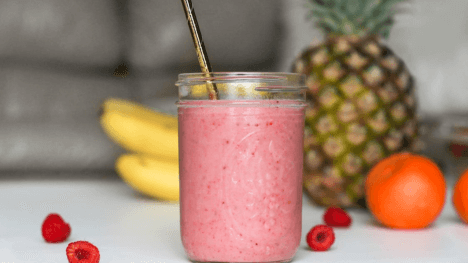What makes this even more concerning is that fruit juice lacks the fiber that whole fruits provide, which normally helps slow sugar absorption. When you drink juice, your blood sugar spikes just as rapidly as it would with soda. The American Heart Association recommends limiting added sugars to 25 grams per day for women and 36 grams for men, meaning one smoothie with juice can blow through your entire daily allowance before you've even had breakfast.
2. Dates Are Sugar Bombs in Disguise
Those chewy, caramel-tasting dates that make your smoothie taste like dessert? They're essentially nature's candy. Two medjool dates – a common smoothie addition – pack about 32 grams of sugar. That's nearly equivalent to a can of soda, and most smoothie recipes call for three to four dates for optimal sweetness. While dates do provide fiber, potassium, and antioxidants, they're still delivering a massive sugar hit that can send your blood glucose on a roller coaster ride.
The sneaky part about dates is their health halo effect. Because they're a whole food, we automatically assume they're better than processed sugar. While they do offer more nutritional value than white sugar, the impact on your blood sugar levels is remarkably similar. Your pancreas doesn't distinguish between "natural" and "artificial" sugar – it just sees glucose flooding your system and responds accordingly.
3. Tropical Fruits Pack a Sweet Punch
Mangoes, pineapples, and grapes are smoothie darlings, but they're also sugar powerhouses that can transform your healthy drink into a liquid dessert. One cup of mango contains about 23 grams of sugar, while a cup of pineapple delivers 16 grams. When you combine multiple tropical fruits – as many smoothie recipes suggest – you're looking at sugar levels that rival or exceed most sodas.
The problem compounds when we use these fruits as the base of our smoothies rather than as accent flavors. Unlike berries, which are relatively low in sugar and high in fiber, tropical fruits are nature's way of packaging large amounts of fructose in an appealing, Instagram-worthy format. This doesn't mean you need to avoid them entirely, but understanding their sugar content helps you make more informed choices about portions and combinations.
4. The Banana Trap
Bananas are probably the most common smoothie ingredient, and while they bring potassium and fiber to the party, they also contribute significant sugar content. One large banana contains about 17 grams of sugar – that's nearly half a can of soda's worth. Most smoothie recipes call for one to two bananas, and when combined with other fruits, the sugar content quickly spirals out of control.
What's particularly tricky about bananas is their versatility and mild flavor, which makes them seem like a neutral addition rather than a major sugar contributor. They also provide that creamy texture we love in smoothies, making them feel essential rather than optional. However, understanding that your banana base is already delivering substantial sweetness can help you make better choices about what else to add to your blend.
5. Agave and Honey Aren't Health Heroes
Many health-conscious smoothie makers avoid white sugar but happily drizzle in honey, maple syrup, or agave nectar, thinking they're making a healthier choice. The reality is more complex. While these natural sweeteners do contain trace minerals and antioxidants, they're still concentrated sources of sugar that can push your smoothie into soda territory. Two tablespoons of honey add 34 grams of sugar – nearly matching a can of Coke.
The marketing around "natural" sweeteners has created a false sense of security. Agave nectar, often touted as diabetic-friendly, is actually higher in fructose than high-fructose corn syrup. Your liver processes these natural sweeteners similarly to how it handles refined sugar, meaning the metabolic impact is essentially the same despite the health halo.
6. Portion Distortion in Smoothie Land
Perhaps the most insidious aspect of smoothie sugar overload is our skewed perception of appropriate portions. While you might think twice about eating three oranges, two bananas, a cup of mango, and a handful of dates in one sitting, blending them into a smoothie somehow makes it seem reasonable. This portion distortion means we're consuming far more fruit – and therefore sugar – than we would if we ate these foods in their whole form.
The liquid format also affects satiety signals, meaning you're less likely to feel full from a smoothie compared to eating the equivalent amount of whole fruit. This can lead to consuming additional calories throughout the day, potentially contributing to weight gain despite your "healthy" breakfast choice. Understanding that smoothies concentrate multiple servings of fruit into one drink helps put their sugar content into perspective.
7. The Fiber Factor Makes a Difference
While whole fruits in smoothies do retain their fiber (unlike juice), the blending process breaks down the fiber structure, making the sugars more readily available for absorption. This means that even though your smoothie contains fiber, it won't slow sugar absorption as effectively as eating whole fruits would. The mechanical breakdown during blending essentially pre-digests the fruit, allowing sugars to hit your bloodstream more rapidly.
Research has shown that the glycemic response to blended fruit is higher than the response to whole fruit, even when the fiber content remains the same. This highlights the importance of considering not just what you put in your smoothie, but how the preparation method affects your body's response to those ingredients.
The Sweet Spot for Healthier Smoothies
The solution isn't to abandon smoothies entirely – they can still be part of a healthy diet when crafted thoughtfully. Focus on vegetables as your base, with spinach, kale, or cucumber providing volume without excessive sugar. Choose lower-sugar fruits like berries, and limit high-sugar additions like tropical fruits and dates. Skip the fruit juice entirely, opting for water, unsweetened plant milk, or coconut water instead.
Consider adding protein powder, Greek yogurt, or nut butter to help stabilize blood sugar and increase satiety. These additions slow the absorption of sugars and help prevent the energy crash that often follows high-sugar smoothies. Remember, the goal isn't to create a sugar-free drink, but rather to create a balanced one that nourishes your body without sending your blood sugar on a wild ride.
The next time you're blending up your morning drink, remember that healthy eating isn't just about choosing whole foods – it's about understanding how those foods affect your body and making informed decisions about portions and combinations. Your smoothie can absolutely be part of a healthy lifestyle, but knowledge is power when it comes to creating truly nourishing blends.
📚 Sources
1. American Heart Association. (2018). Added Sugars and Cardiovascular Disease Risk in Children: A Scientific Statement From the American Heart Association. Circulation, 137(14), e1-e11.
2. Flood-Obbagy, J. E., & Rolls, B. J. (2009). The effect of fruit in different forms on energy intake and satiety at a meal. Appetite, 52(2), 416-422.
3. USDA FoodData Central. (2021). Nutritional composition of common smoothie ingredients. U.S. Department of Agriculture.
🔍 Explore Related Topics





